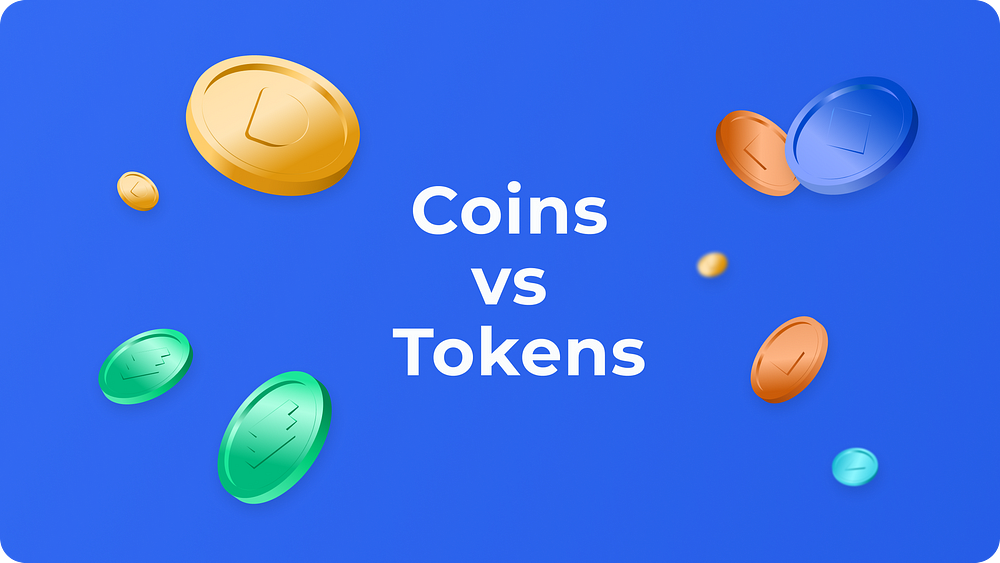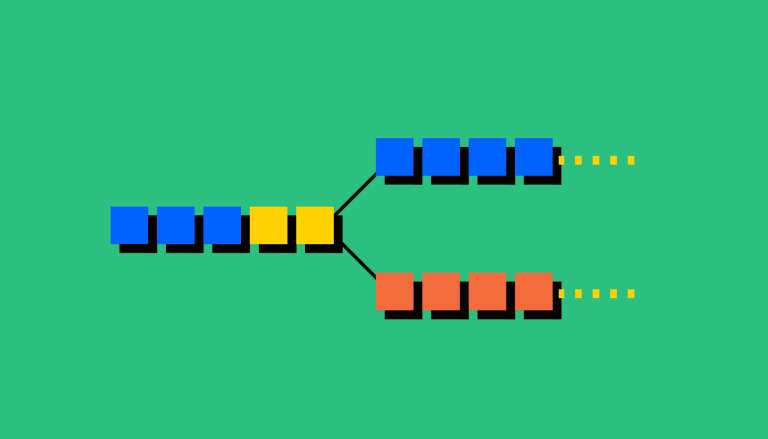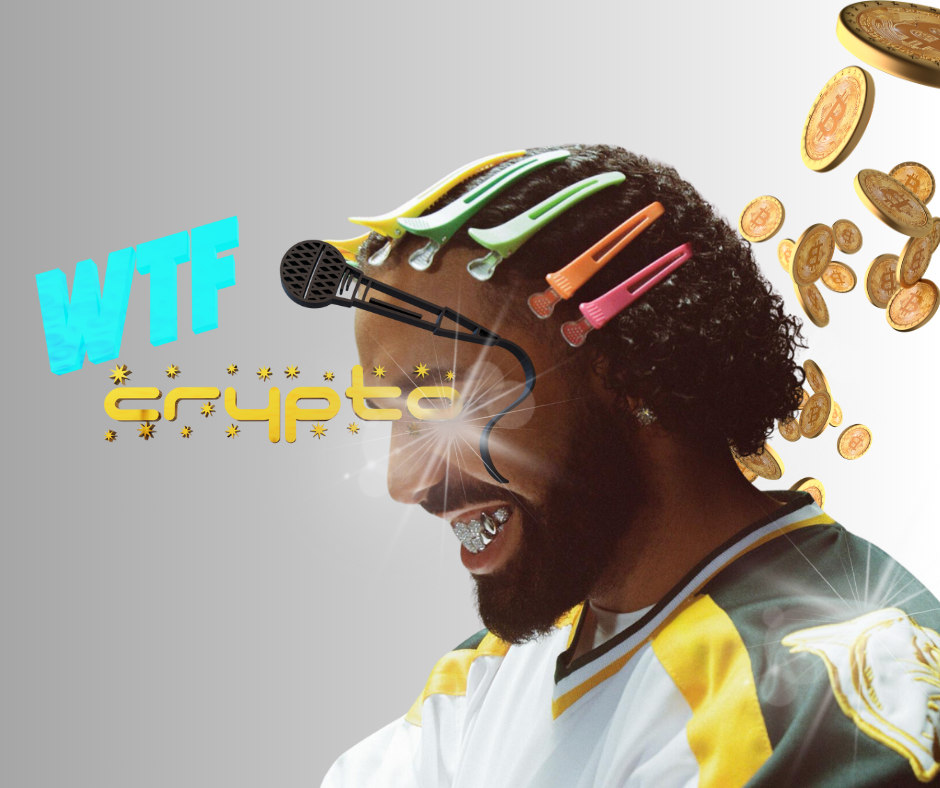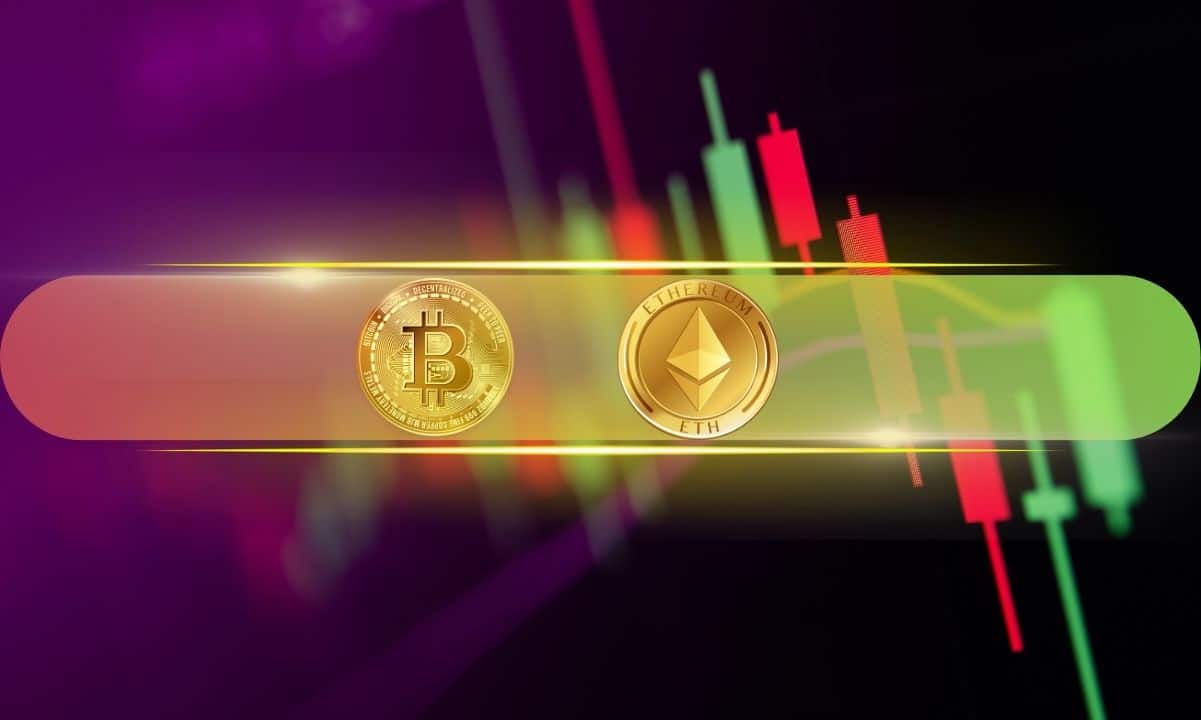 Crypto Coins vs. Tokens: The Difference Explained (zerion.io)
Crypto Coins vs. Tokens: The Difference Explained (zerion.io)The two terms are used interchangeably, but what is the difference between a coin and a token?
Objectives
- What is a Coin?
- Types of Coins
- How are Coins created?
- What is a Token?
- How are Tokens created?
- Types of Tokens
- Coins vs Tokens
What is a Coin?
Coins are cryptocurrencies that belong to their NATIVE blockchain.
This means that the coin was created for and operates on a specific blockchain network.
Examples:
- BTC: Bitcoin
- ETH: Ethereum
- DOGE: Dogecoin
Characteristics of Coins:
- Decentralisation: not controlled by one central authority and governed by rules of protocol and consensus of community
- Secure: protected by cryptography and encryption, therefore resistant to hacking, censorship, and fraud.
- Scarcity: MOST tend to have a limited supply predetermined by algorithm/code. e.g. Bitcoin has a total supply of 21 million.
Types of Coins
- Native coins — coins which run on their own blockchain and serve as the main currency on the network. e.g. BTC (Bitcoin)
- Stablecoins: coins that are pegged to the value of another asset, such as fiat or gold. Example: Tether (USDT), USD coin (USDC).
 What is a fork? | Coinbase
What is a fork? | Coinbase- Forked coins — coins that derive from the same original blockchain but have split off due to a change in the blockchain protocol.
Forks occur when the community makes a change to the blockchain protocol (set of rules), resulting in the chain splitting, producing a second blockchain that shares its history with the original.
There are two types of forks:
- Soft fork — essentially a software upgrade for the blockchain, and becomes a new set of standards for the blockchain as long as it's adopted by all users. Examples of new standards would be new functions or features.
- Hard fork- code is changed so much that the new version is no longer backward compatible with the earlier blockchain, so the blockchain splits in two; the original blockchain and the new blockchain which follows a new set of rules. This creates an entirely new cryptocurrency, examples include: Bitcoin Cash and Bitcoin Gold which evolved out of the original Bitcoin blockchain via a hard fork.
 What is a fork? | Coinbase
What is a fork? | Coinbase- Wrapped coins — coins that represent another cryptocurrency on a different blockchain. They are ‘wrapped’ to allow them to be used on another blockchain. For example, if you have a Bitcoin (BTC operates on its own blockchain) but you want to use it on an Ethereum blockchain (doesn’t support Bitcoin). You wrap the 1 Bitcoin into 1 wrapped Bitcoin (WBTC) which is an Ethereum-based token that represents 1 bitcoin, and thus allows you to use that Bitcoin on the Ethereum blockchain.
- Altcoins — cryptocurrencies other than Bitcoin.
How are coins created?
Coins are created through MINING.
Mining — computers solve complex math puzzles and validate transactions to produce coins.
Miners use powerful computers to solve complex mathematical problems, the first one to solve the problem (verify the problem) gets to add the next block of transactions to the blockchain and is rewarded with a certain amount of cryptocurrency.
Simple Example:
Your school has a system where students earn digital points (“SchoolCoin) for completing tasks or helping others. To ensure everyone’s points are recorded fairly and no one cheats, each time someone earns points, the transferring of points to that individual (transaction) needs to be verified and added to the school's digital ledger. Now imagine, some students volunteer to use their calculators to check and record these transactions in exchange for the chance of earning some SchoolCoin themselves. The student volunteer who can solve the challenging math problem the quickest and verify the transactions quickly earns SchoolCoin and gets to record the transaction on the ledger.
In regards to how the SchoolCoin Digital Ledger System would operate:
- Alex helps Jamie with a difficult math problem, Alex receives 10 SchoolCoin points.
- Alex submitted a claim for these 10 points through the school’s digital platform, specifying the task (helping Jamie with math) and the points earned
- The system randomly selects a few students who have volunteered as verifiers, these students verify to see if Alex’s submitted claim is genuine. They do this through checking the submission against a set of criteria such as confirmation from Jamie, or a teacher’s note.
- The approved transaction includes the date, participants, the task, and the amount of SchoolCoin points (10 points), is encrypted and added to the ledger
- All students can view the transaction in the ledger, ensuring transparency and the ledger is secure through encryption, meaning no unauthorized changes can occur
What are tokens?
Tokens — digital representation of an asset or utility on a blockchain. They do not run on their own unique native blockchain, instead they run on another blockchain.
Coins tend to be used as a store of value, whereas tokens can be used for multiple purposes (utility) such as: granting a right, paying for a job, gateway to an extra service, a reward/incentive, etc.
Characteristics of tokens:
- Utility: pay for fees, receive benefits, used on dApps
- Governance: vote on proposals, changes, decision-making process
- Interoperability: enable cross-chain communication
Types Of Tokens
- Utility tokens- provide access to products or services offered. E.g. Filecoin enables access to decentralized file storage.
- Security/tokenized securities/equity tokens — tokens that represent shares in a business/asset/ income. Example: tokenized real estate where the tokens represent a share of ownership or property.
- Governance tokens — holders of the token granted decision-making rights (governance) in the token’s protocol such as voting on changes to the protocol. E.g. Maker (MKR), Compound (COMP).
- DeFi Tokens — tokens represent financial instruments such as lending, borrowing, or liquidity provision. Example: UniSwap (UNI) and Aave (AAVE).
- Non-Fungible Tokens — tokens that represent ownership of a unique asset. e.g. art, property, collectibles. CryptoKitties is an example of a digital artwork token.
- Fungible tokens: tokens that can be interchanged with a token of the same type.
How are tokens created?
Tokens are PRE-MINED: developers use smart contracts to issue new tokens and distribute them.
The first set of tokens are normally handed out to ICO investors, developers, and team members who helped give birth to the project.
COINS VS TOKENS
 Coin vs Token: What Is the Difference? | CoinMarketCap
Coin vs Token: What Is the Difference? | CoinMarketCapIf you ever are confused about whether a cryptocurrency is a coin or a token, remember:
COIN= OWN NATIVE BLOCKCHAIN
TOKEN = NOT ON NATIVE BLOCKCHAIN
COIN= LIMITED TO ITS NATIVE BLOCKCHAIN
TOKEN= CAN BE SUPPORTED BY DIFFERENT BLOCKCHAINS (INTEROPERABLE)
Please note:
Coins can be used to buy tokens, and likewise, tokens can be used to pay for fees on coin networks.
Coins and tokens can both be staked.
Coins and tokens can be swapped with one another using DEX or AMMs.
Coins can be wrapped into tokens, or tokens can be unwrapped into coins.
Similarities
- Digital Assets: Both are digital assets that exist on a blockchain.
- Transact Online: both used to transact or exchange value over the internet.
- Blockchain Technology: both utilize blockchain technology.
- Market Participation: both can be traded on cryptocurrency exchanges and fluctuate based on market dynamics.
Differences
- Underlying Blockchain:
- Coins are native to their own blockchain.
- Tokens are built on top of existing blockchains using smart contracts.
2) Purpose and Use Cases:
- Coins: medium of exchange, store of value, unit of account.
- Tokens: access to rights of services, governance rights, part of DeFi applications, and shares of ownership.
3) Creation Process:
- Coins created through MINING in proof-of-work systems or MINTING in proof-of-stake systems, depending on the blockchain consensus mechanism.
- Tokens created through smart contracts on the blockchain that support them, and the smart contract follows certain standards such as ERC-20 or ERC-721.
4) Regulatory Treatment
- Coins may be treated as currency by regulators depending on jurisdiction and the specific coin in question.
- Tokens can be classified as securities, utilities, or other types of assets, thus leading to a more complex regulatory landscape.
5) Examples:
- Coins: Bitcoin (BTC), Litecoin (LTC), Ether (ETH)
- Tokens: Tether (USDT), CryptoKitties (NFT), UniSwaps (UNI) which is a governance token.
Coins vs Tokens: Simplified was originally published in The Dark Side on Medium, where people are continuing the conversation by highlighting and responding to this story.

 2 months ago
34
2 months ago
34






 English (US) ·
English (US) ·